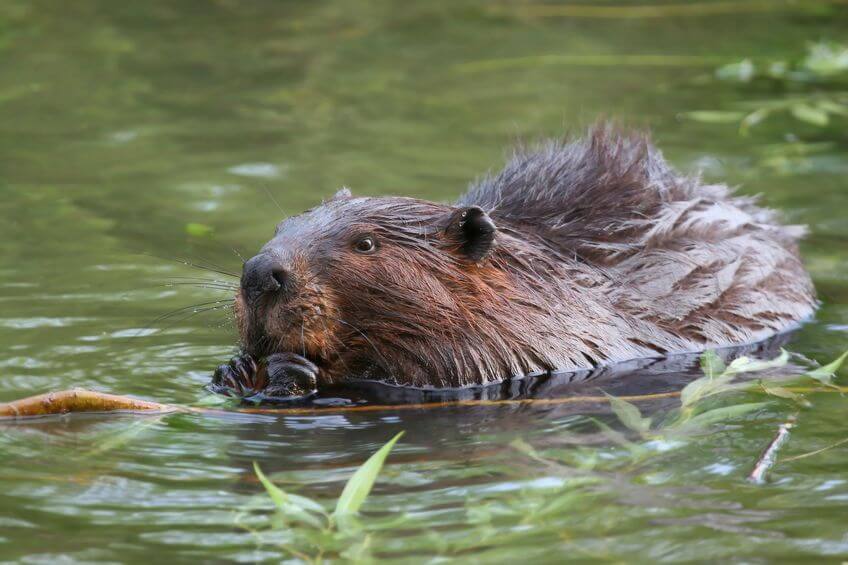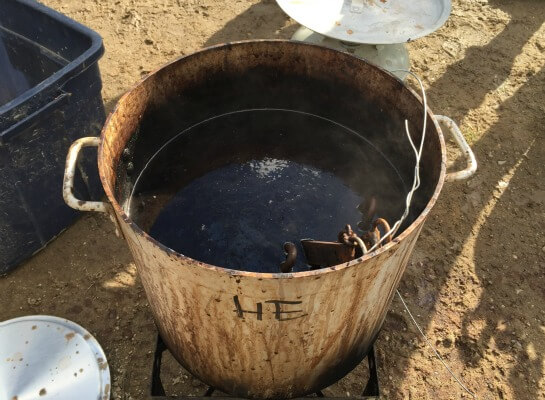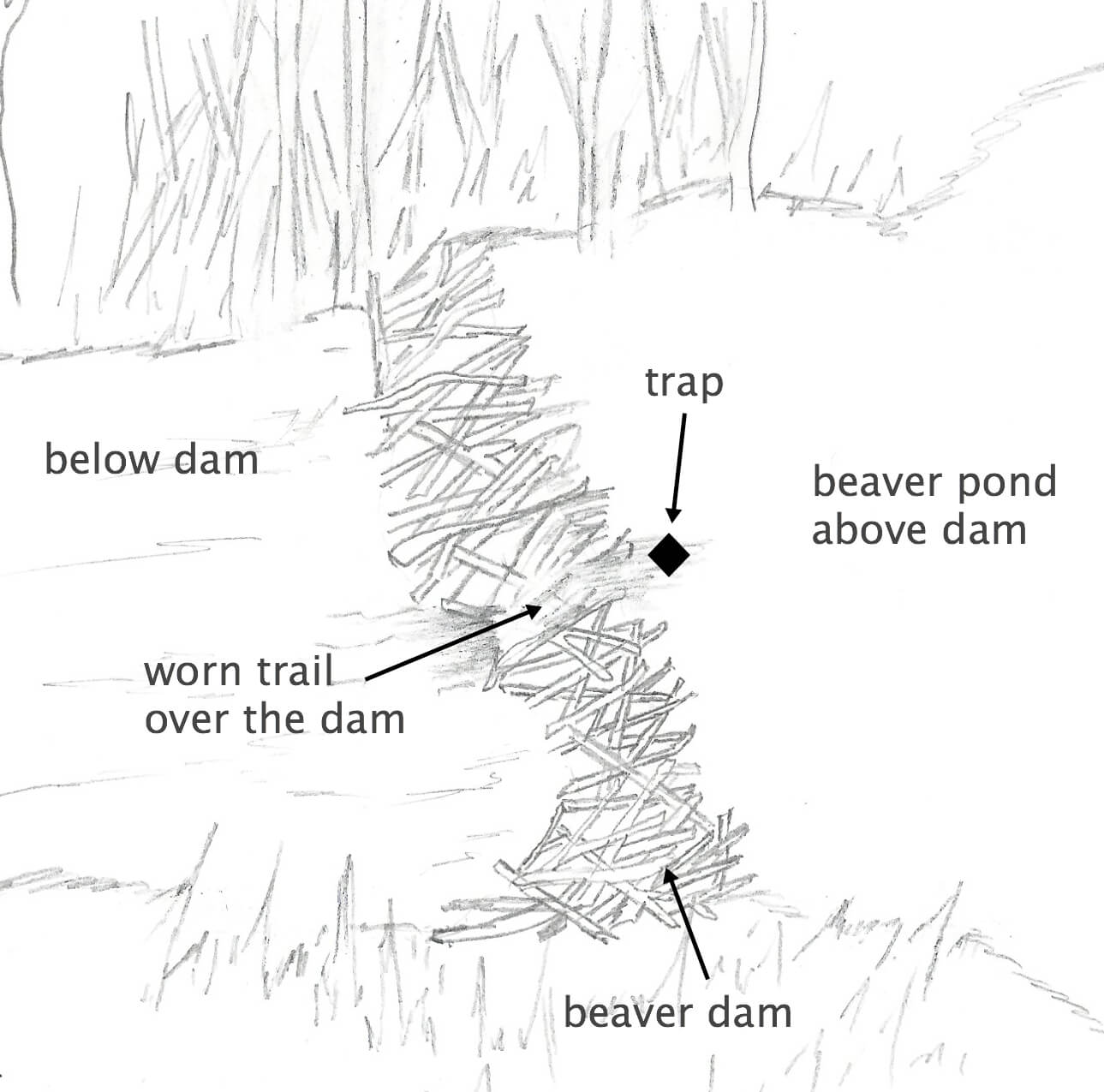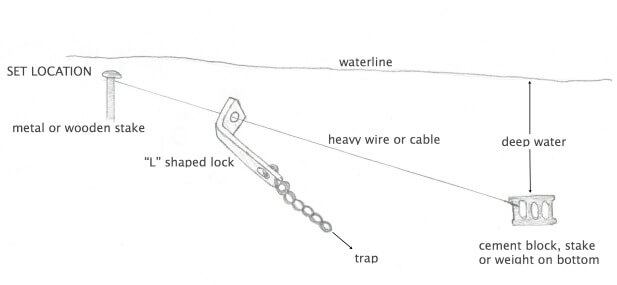- Home
- Trapping Beavers
- How to Trap a Beaver
How To Trap A Beaver
This post may contain affiliate links so I earn a commission.
Learning how to trap a beaver is not difficult.
The mountain men opened the west trapping them with the same leg hold traps you can use to catch them today.
They are easy to catch if you learn the basics and keep it simple.
If you are going to use leg hold traps, a #3 or #4 double long spring makes a very good beaver trap.
I use the same trap for coyotes, so they do double duty for me.

My traps are dyed and waxed for coyote trapping, but I have seen plain old rusty traps take plenty of beaver.
The dark traps blend in well under water with the bottom of the pond.
When you are using body grip traps, go for the 330 size.
These traps can be difficult to set, but if you practice and use the safety latches they are manageable for most people.
To set one of these larger conibear traps you can use a rope or conibear tongs to compress the springs and set the safety hooks.
Also use a conibear safety gripper for added security.
Beaver Trap Maintenance
I wouldn't recommend waxing body grip traps.
If you do, make sure you scrape all of the wax off the dog and where it engages the jaw of the trap.
If you don't do this, the trap is almost impossible to keep set.
I have found it's better to speed dip this type of trap.

You can even spray paint them.
I usually use black in the fall or spring, and white in the winter.
You can also have a lot of success snaring beavers where it's legal.
Again, I use double duty snares that are the same ones I use for coyotes.
Snares can be boiled and waxed but need to be worked afterwards to make sure the lock travels freely without any catches anywhere.
Beaver Sets - How To Trap A Beaver
Most sets for beaver are blind sets.
These are sets when you are anticipating where a beaver will walk or swim, and try to place the trap so it will be caught.
Beaver are rarely trap shy unless they have been educated by you or another trapper.
This usually happens when they are caught by a front foot and twist off, or spring a poorly placed trap.
When learning how to trap a beaver, the set that most beginners think to try is also one of the worst at catching beaver.
This poor set is constructed when someone breaks a hole in the beaver's dam and sets a trap in the gap, hoping to catch the beaver when it comes to make a repair.
This type of set will occasionally catch a beaver but most likely it will result in a fired trap full of mud or sticks and a smarter beaver.
Many times the trap is set off by the beaver trying to plug the gap with mud and sticks.

A better set is where the beaver is already traveling over the dam.
Look for a muddy trail leading up the face of the dam and set your trap there.
You can set a leg hold at either end of the trail where it enters the water.
Set your trap back a few inches from the trail and in five or six inches of water as this will help secure a back foot catch.
If you can legally set a body grip trap on land, this trail is a great place to do it!
Make sure to use plenty of sticks to secure the trap so the beaver doesn't knock it over instead of trying to go through it.
A snare could also be used in this location.
The best sets using body grips include den openings (where legal) and in channels that the beaver uses to travel around the pond area.
If the water is deep you can use longer sticks and wire them together so they look somewhat like a ladder.
Set your trap at the proper level and push the sticks firmly into the muddy bottom.
Securing Your Trap - How To Trap A Beaver
Whenever possible, you should make your set so the beaver can reach deep water and the weight of the trap will drown it.
You can set up a drowning slide that allows the trap to move in one direction down the wire (just like a snare lock) that's staked or tied to a heavy weight in deeper water.

I have often used large logs tied to the trap to act as a drag.
Usually the beaver will be caught and head for deep water and the log will prevent it from entering its lodge and I usually find the beaver drowned.
On occasion they will tangle up somewhere close by.
Overall - How To Trap A Beaver
Learning how to trap a beaver is not rocket science.......but it is a lot of work.
Beaver ponds are often difficult to navigate and carrying the weight of larger traps, drowning weights or rods, and the beaver itself can really give you a workout.
If you keep your sets simple and set them correctly at a good location, you can catch a lot of beavers fairly quickly!



